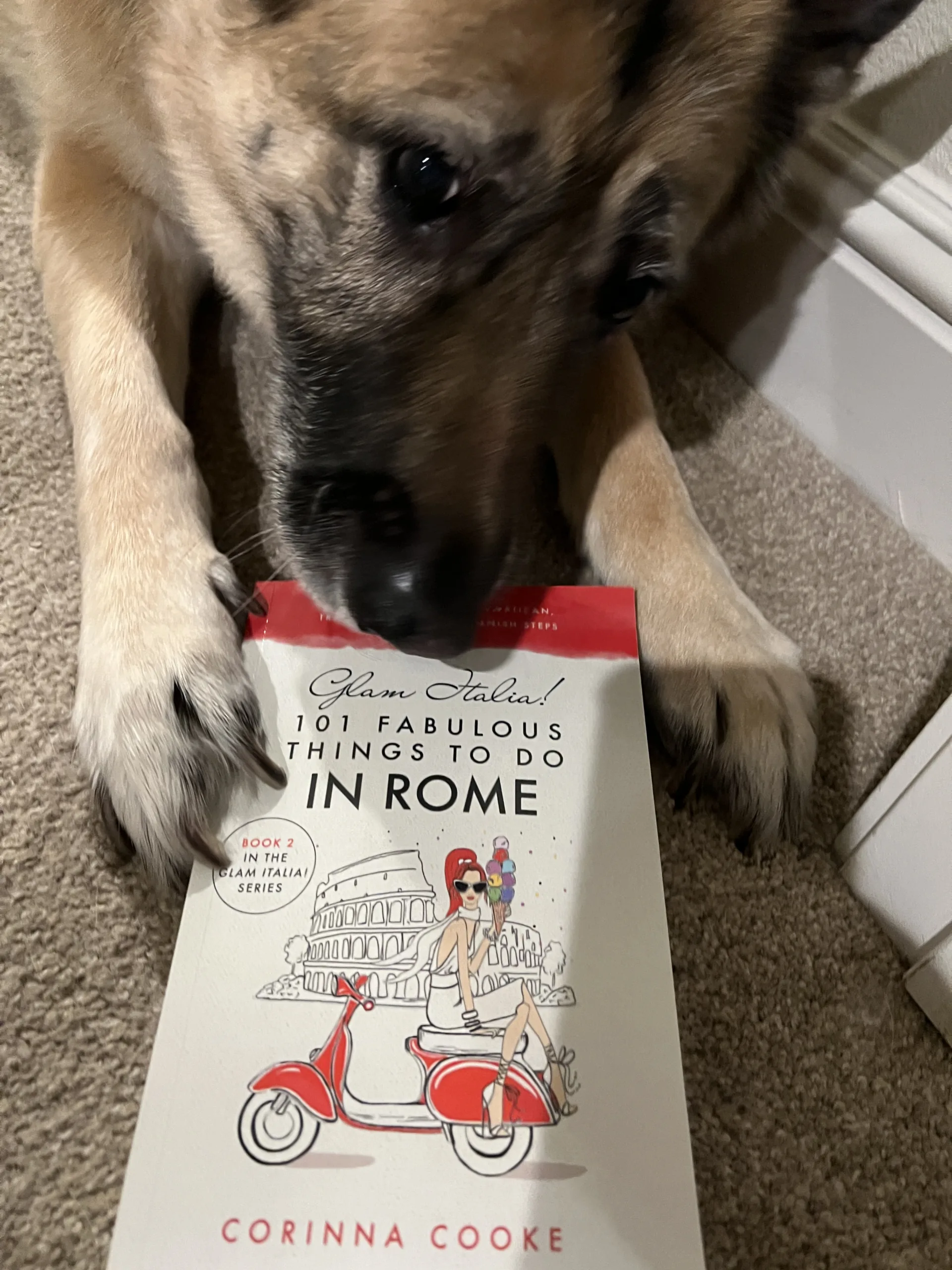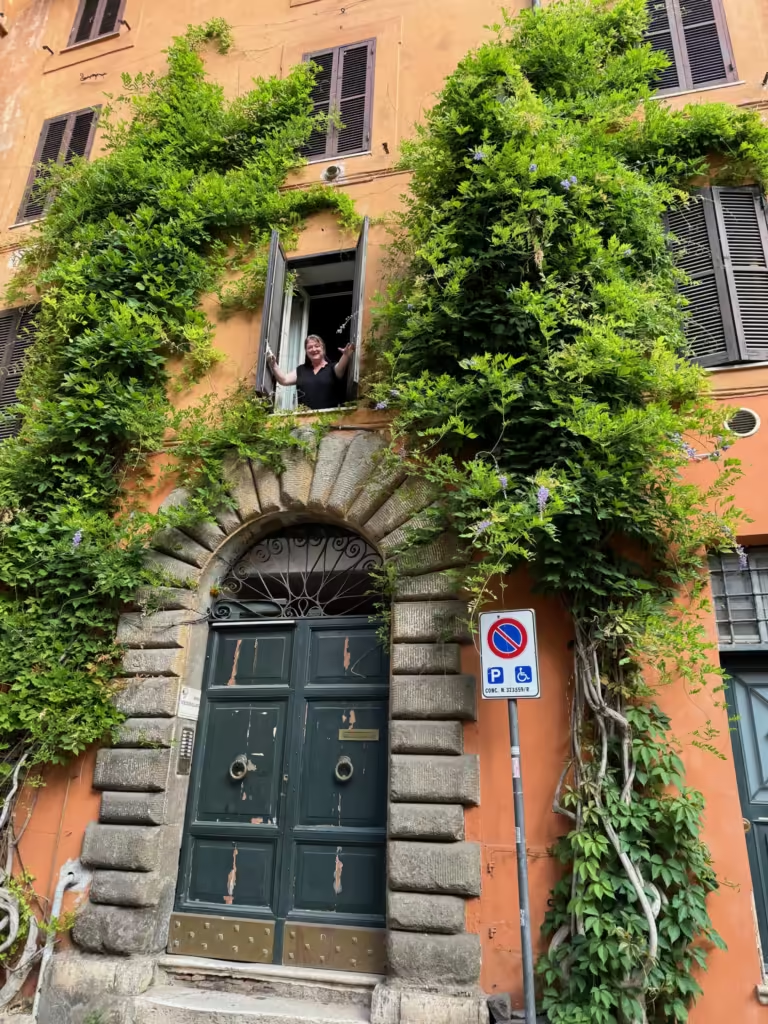The Best Things to see in Rome!
This post contains affiliate links. If you click one and make a purchase, I may earn a small commission at no extra cost to you. It helps support the site so I can continue to offer you great content!
I think one could spend weeks in Rome and barely scratch the surface of all there is to see. Here are the top 7 sights, done in a 3 day visit. I think if you just have a short time in Rome try to incorporate these into your visit. You’ll feel awed and desperate to spend more time in the Eternal City. I can’t wait to return to Rome soon to have more time to not only revisit these sights, but spend time just “being” in Rome.
Trevi Fountain
This fountain is breathtaking the first time you see it, and equally so the following times you see it! It’s one of those things that just doesn’t translate well in photos as to how stunning it is in person. The Trevi Fountain is right in the midst of a neighborhood, surrounded by shops, apartments, and offices. There is just something about the masterpieces of modern civilization just being right out there in the midst of everyday life that endlessly to enchants me with Rome!
I read many tips before my visit warning that you must arrive at the crack of dawn for a chance of a close photo of the fountain. It’s certainly a good idea to attempt to get there with few crowds and heat in the summer. However I found that each time I went, even if it was really crowded, you could still wait a few minutes and get right up to the edge of the fountain for your photos and selfies. So don’t worry too much if you oversleep a little!
Also, if you can, try to visit the Trevi Fountain during the day and again at night to see it lit up. Just stunning! Don’t forget to follow the tradition set by the movie Three Coins in a Fountain : throw a coin with your left hand over your right shoulder to ensure you will return to Rome someday! It has worked for me so far! 😀
There’s a hotel directly across from the Trevi Fountain where you can get a room with a view! I am so tempted to try this someday, though I can understand that for some people this might be their worst nightmare! Here’s the link to the hotel in case you’re interested: Hotel Fontana.
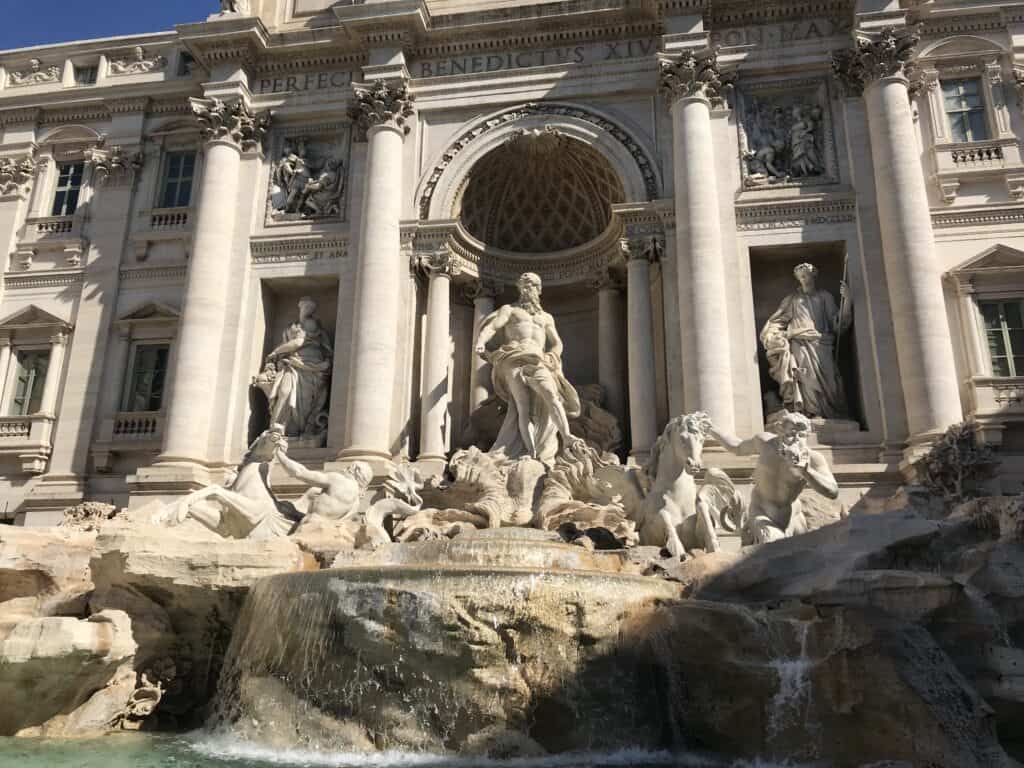

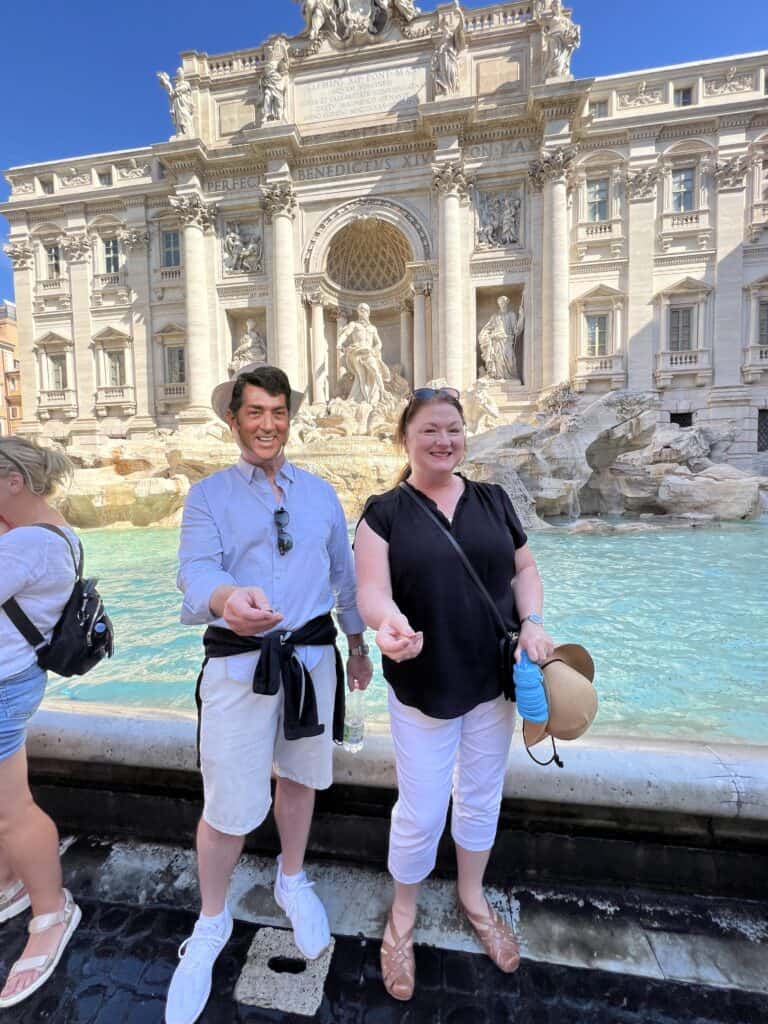

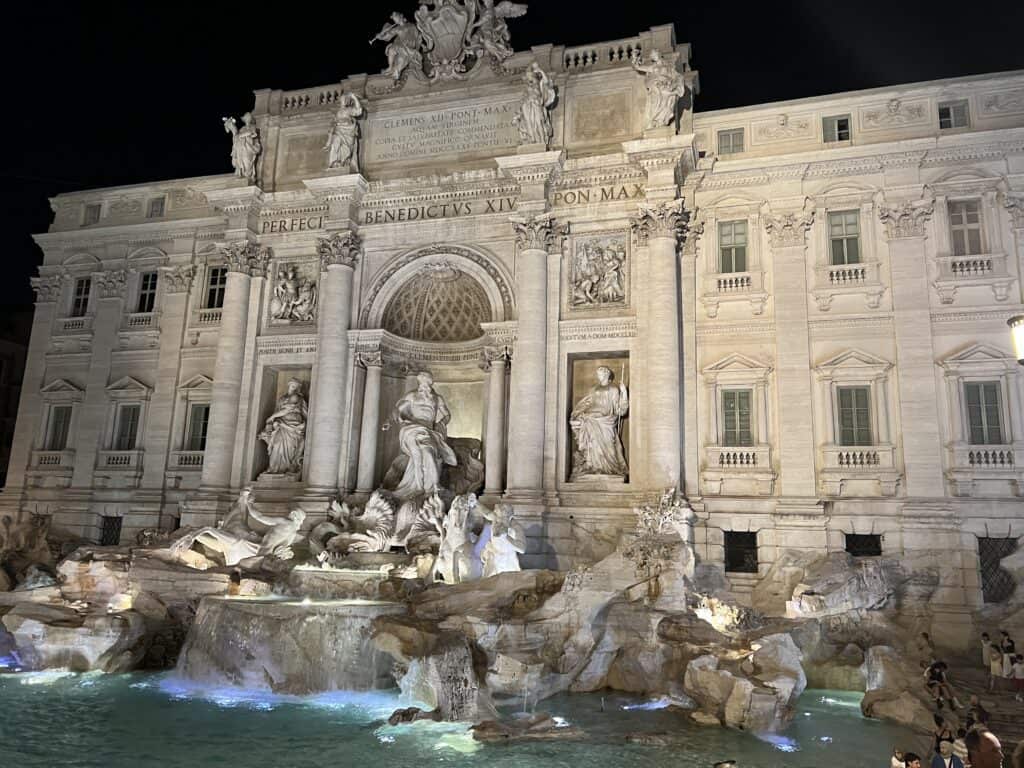
Click below for a live view of the Trevi Fountain!
Vatican
The Vatican Museums and St. Peter’s Basilica are must see stops when visiting Rome. Though the Vatican City is actually a separate country (2024 population around 800), it is within the Rome city limits. You can easily walk from Rome’s historic center (ie. the Trevi Fountain) to St. Peters Basilica in about 1/2 an hour.
As one of Rome’s top tourist destinations I recommend booking your tickets well in advance. We did a tour with a private guide which was fantastic. One of the biggest benefits of booking a private tour (other than finding out what the heck you’re looking at) is getting to skip the huge lines of people waiting to get in. It is free to enter St. Peter’s Basilica, but on the day we were there the line to get in was hours long in the hot sun!

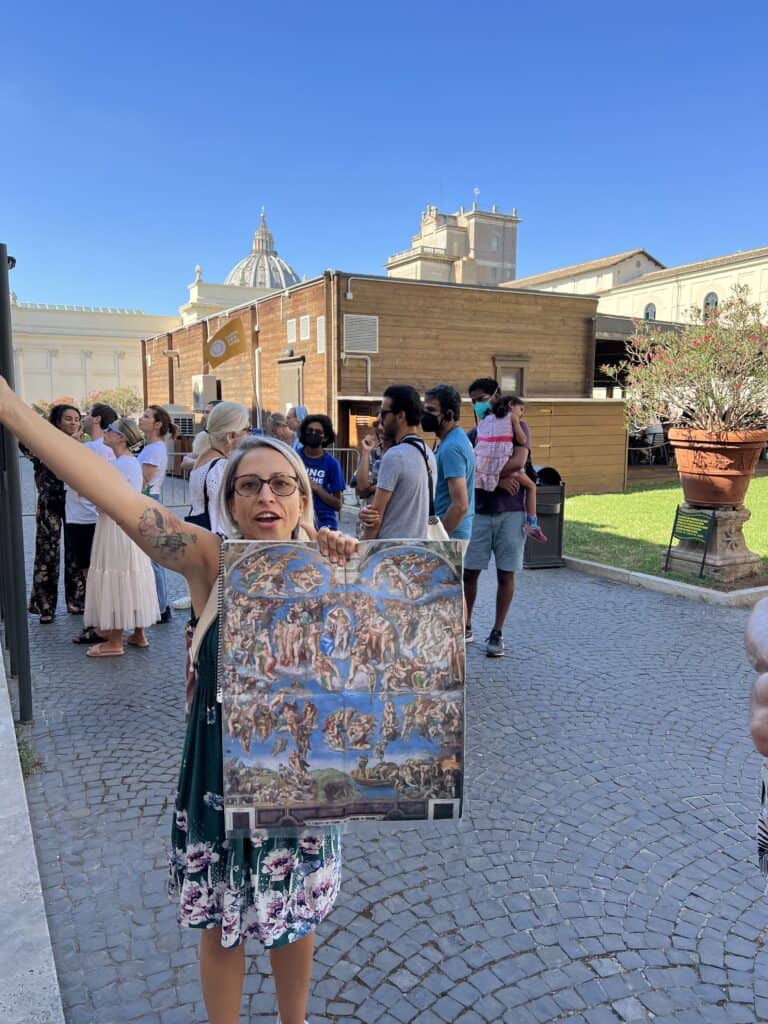


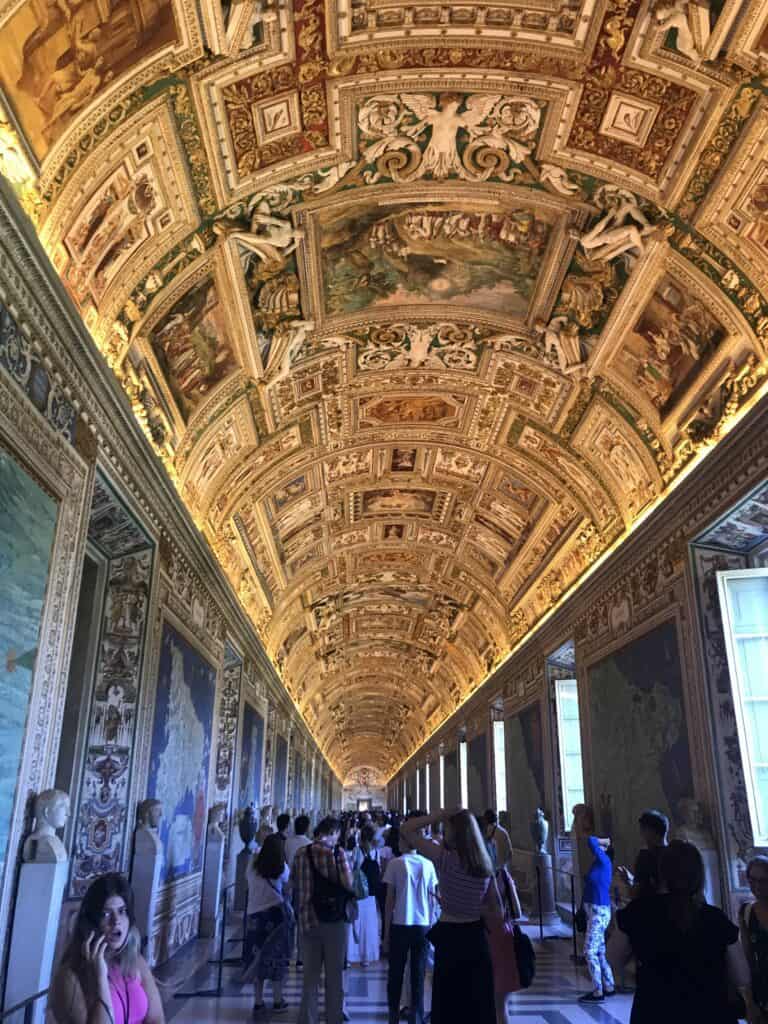


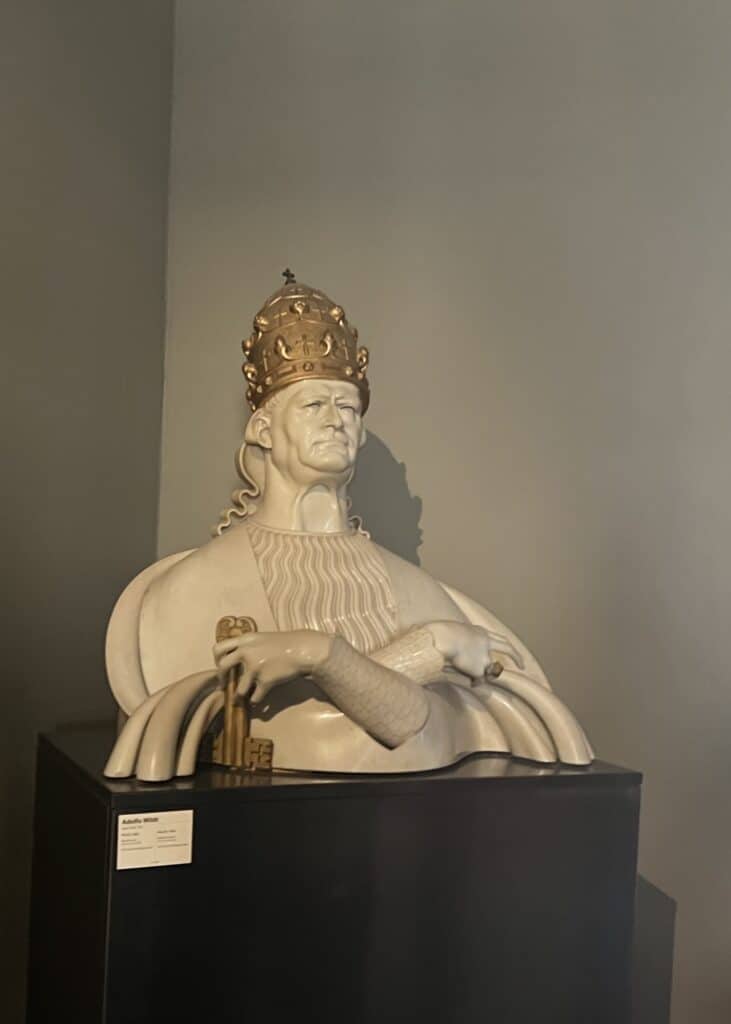
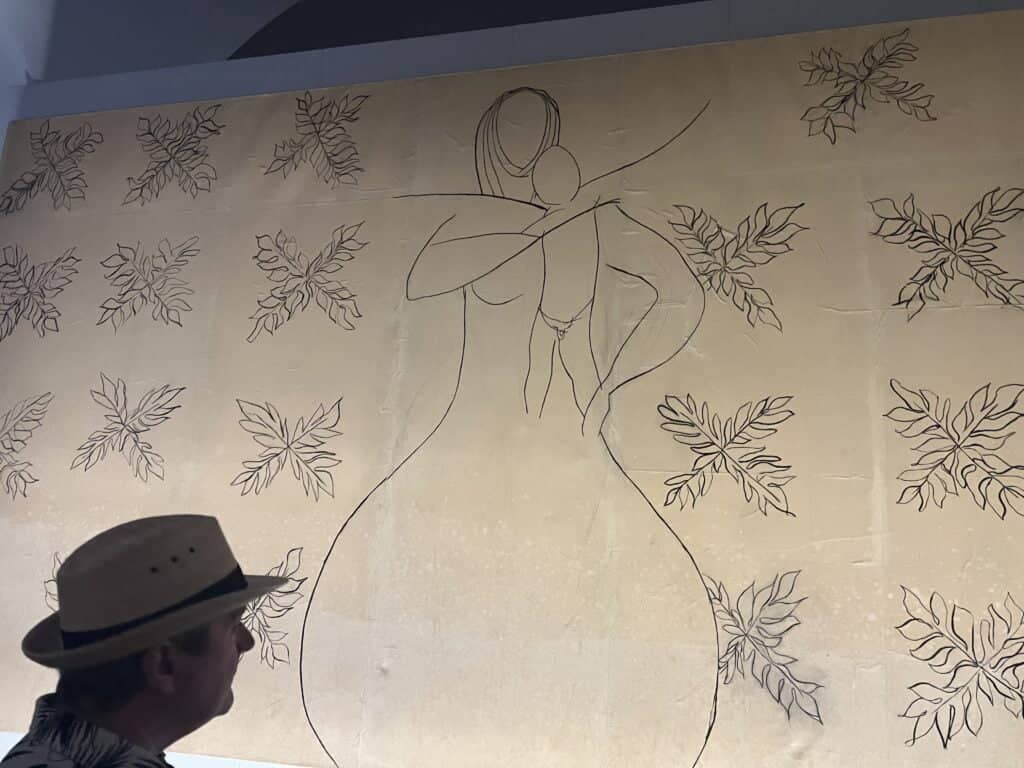
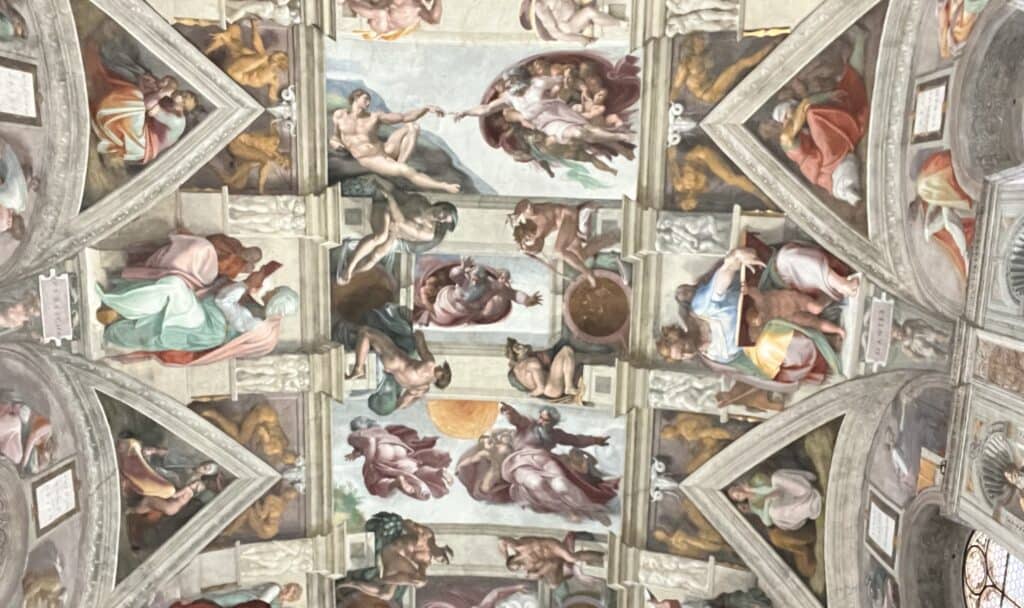
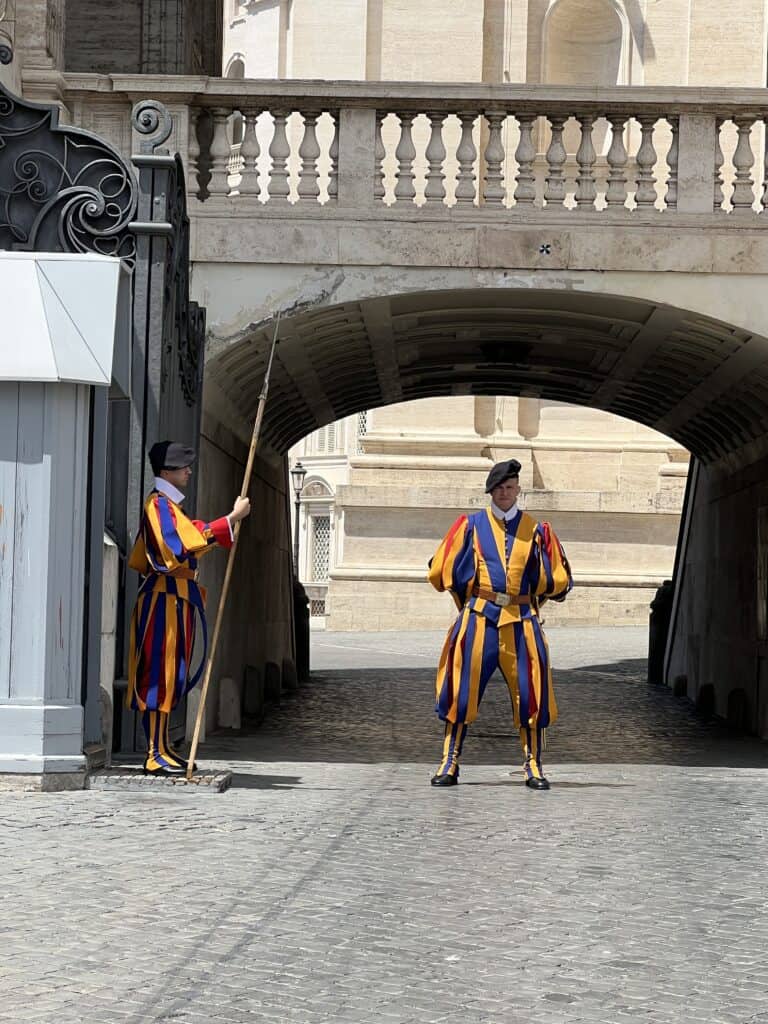
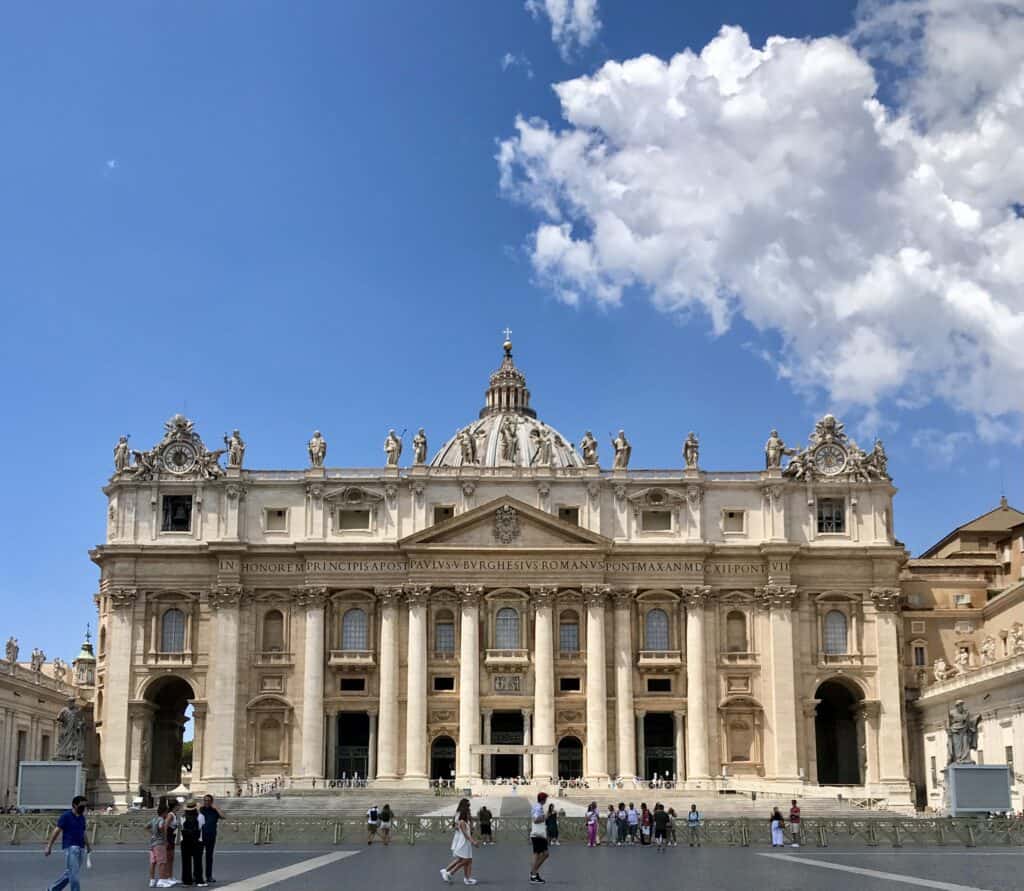


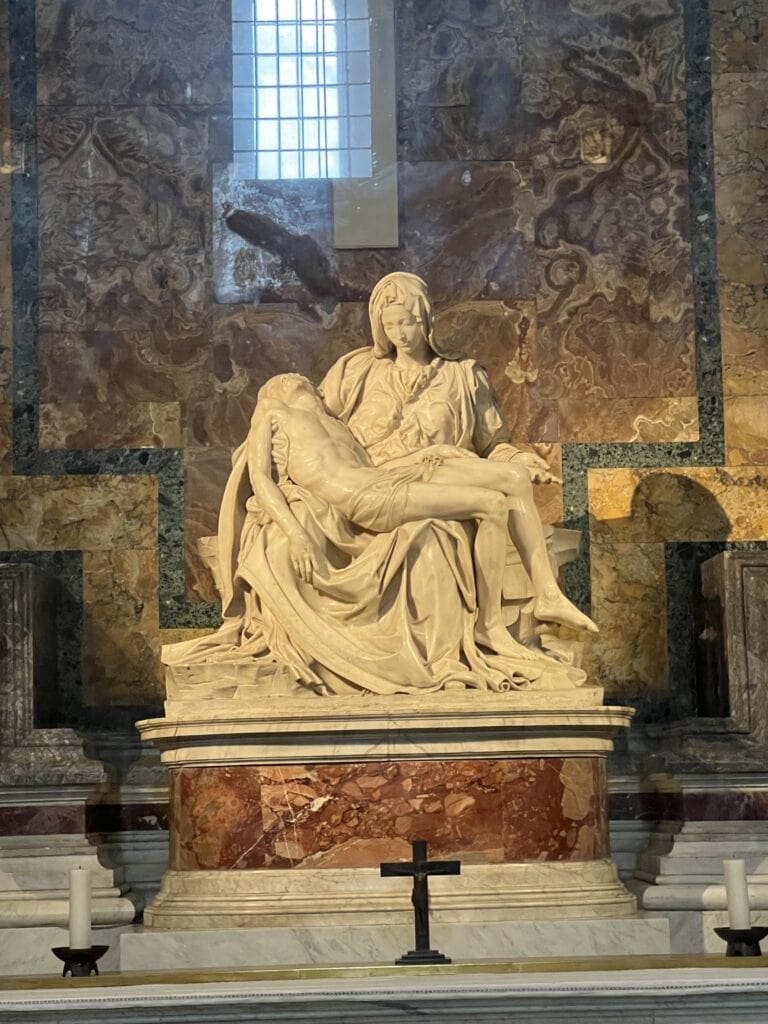
Church of Saint Ignatius
I’d never heard of this church, but our wonderful Rome tour guide, Tiffany (see below), showed us this marvel which was right on our way walking from the Trevi Fountain to the Pantheon. I was “floored by the ceiling” (haha)!! I wish I had more time to spend there and can’t wait to go back. I’ve never seen anything like the beautiful 3D paintings before. Of course it is hard to see the magnificence of this in the pictures. But look how the baroque artist, Andrea Pozzo, extended the painting past the surface, like in the second photo below where the man’s hand extends into the window frame!
There is also a false dome painted on the ceiling above the alter. Astounding!


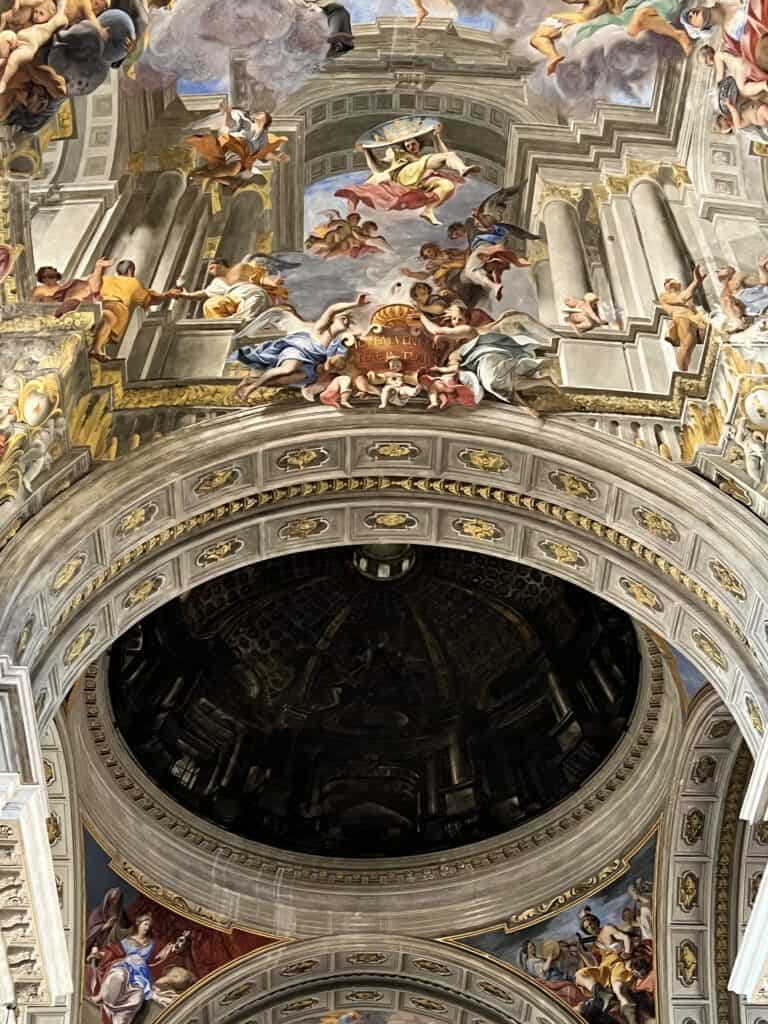

Piazza Navona
This is a large oval shaped plaza from the 1st century with three magnificent fountains, surrounded by restaurants and bars. This is an excellent people-watching spot! Check out the page linked in the title above to see a list of the movies filmed here!
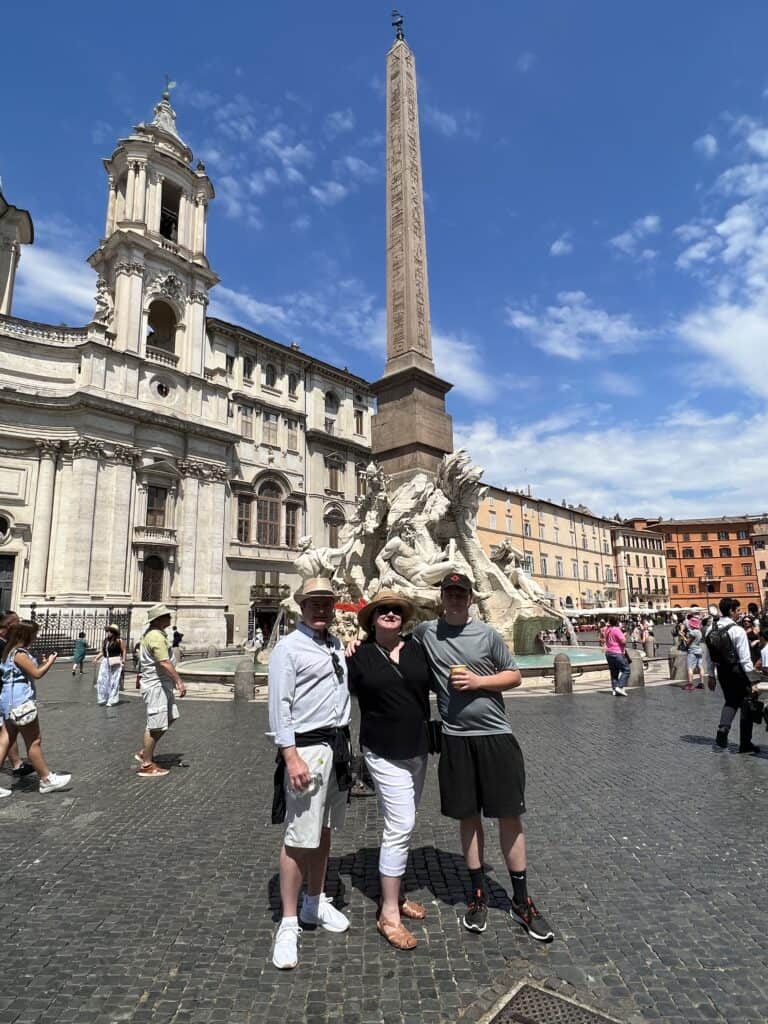


Pantheon
This former Roman temple was built in around 125AD. The huge dome was the first of its kind, and is larger than St. Peter’s dome. Absolutely astounding to me to think of the folks back 2000+ years ago figuring out how to make such a thing! The hole at the top (the oculus) is never covered, thus when it rains it falls inside. There are drains and an inclined floor to deal with this. Access is free on the first Sunday of the month, otherwise you now need a ticket to enter (@5 Euros).
The Pantheon is an active Catholic Church with regular service Saturdays at 5PM and Sundays at 10:30AM (free mass admission). Be sure to wear appropriate clothing and not yell like a maniac while visiting!


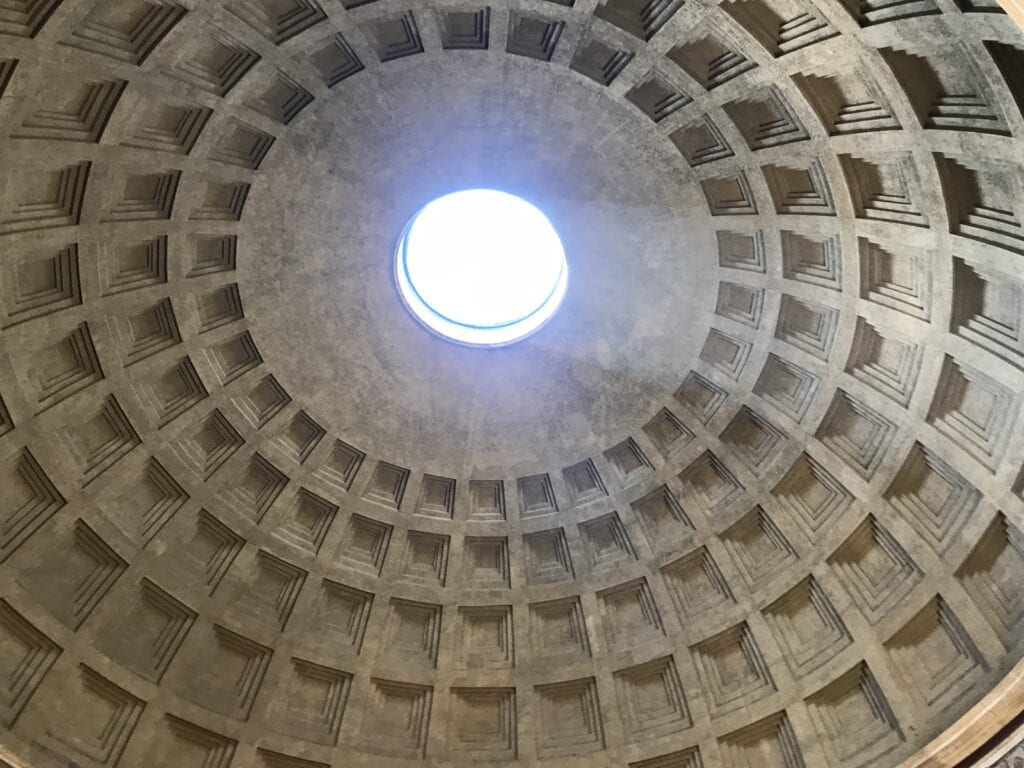
Spanish Steps
The Spanish Steps were built in 1725 and there are 135 steps. When they were built they led to the Spanish Embassy, which is no longer located there. They were featured in the Audrey Hepburn movie “Roman Holiday” and many other movies. This is in a fancy shopping district full of high end deisgner stores. Honestly, other than this site being famous I am not particularly enchanted with it, but it is one of those things to see yourself to check off the list! Apparently in Spring time the steps are adorned with colorful flowers, which is probably very pretty.
BTW, sitting on the steps is not allowed! You’ve been warned!
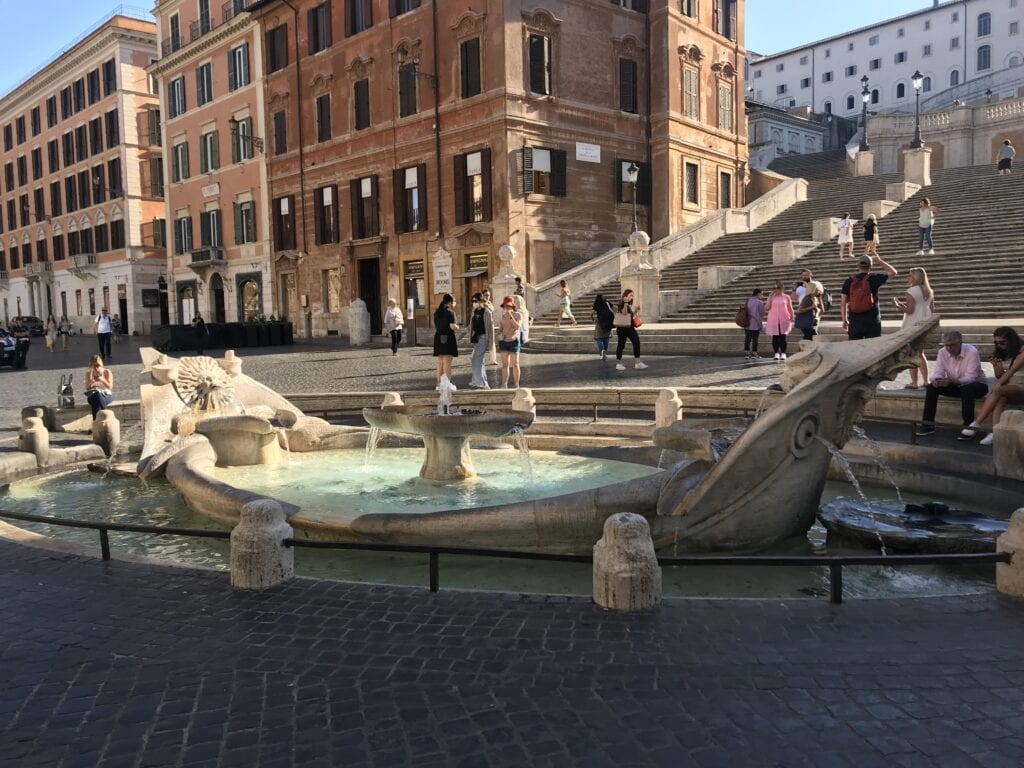
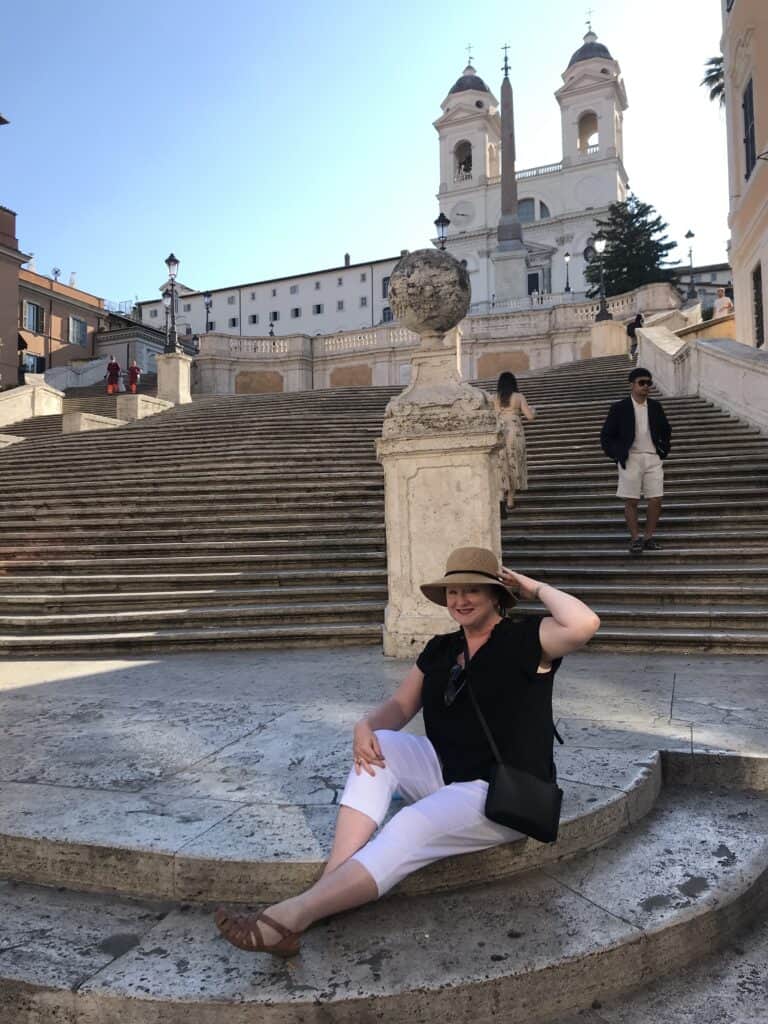
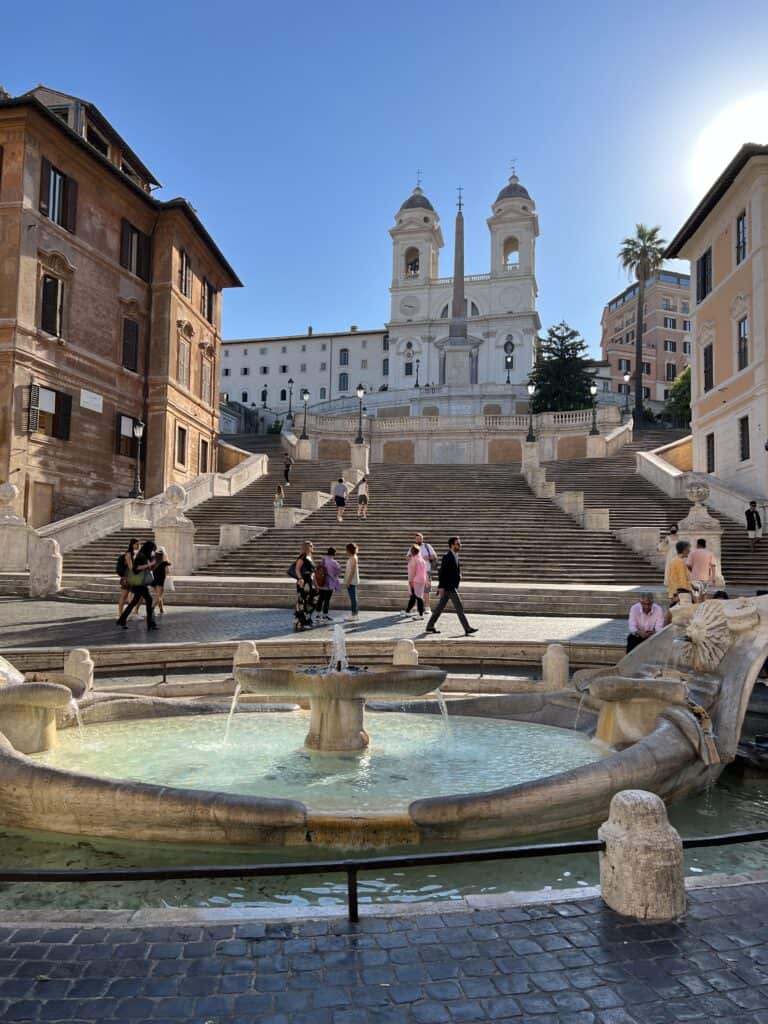
Colosseum
No post about what to see in Rome could be complete without the Colosseum! This amphitheater was built in 72AD, and today received 4 million + visitors per year! Though I haven’t toured the inside yet, I do know that as the top tourist attraction in Italy this is definitely one you should prepare for well in advance to avoid long long waits in line! Even without taking a tour, the Colosseum is fabulous to see from the outside! Be sure to see it in both the day and at night!
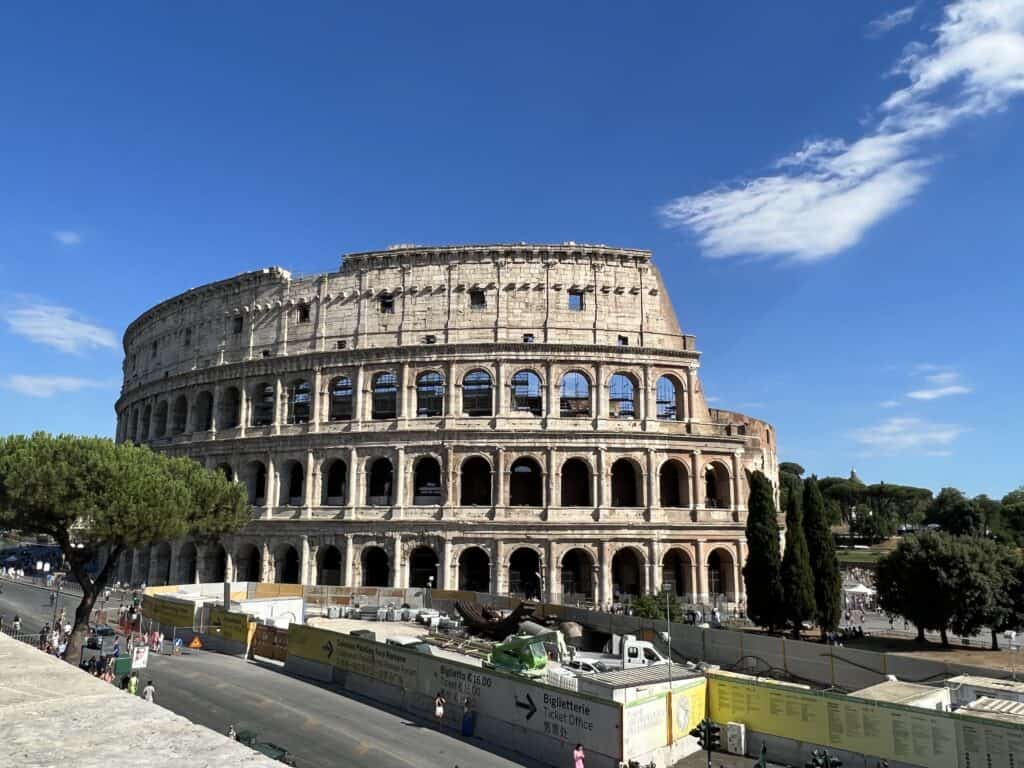
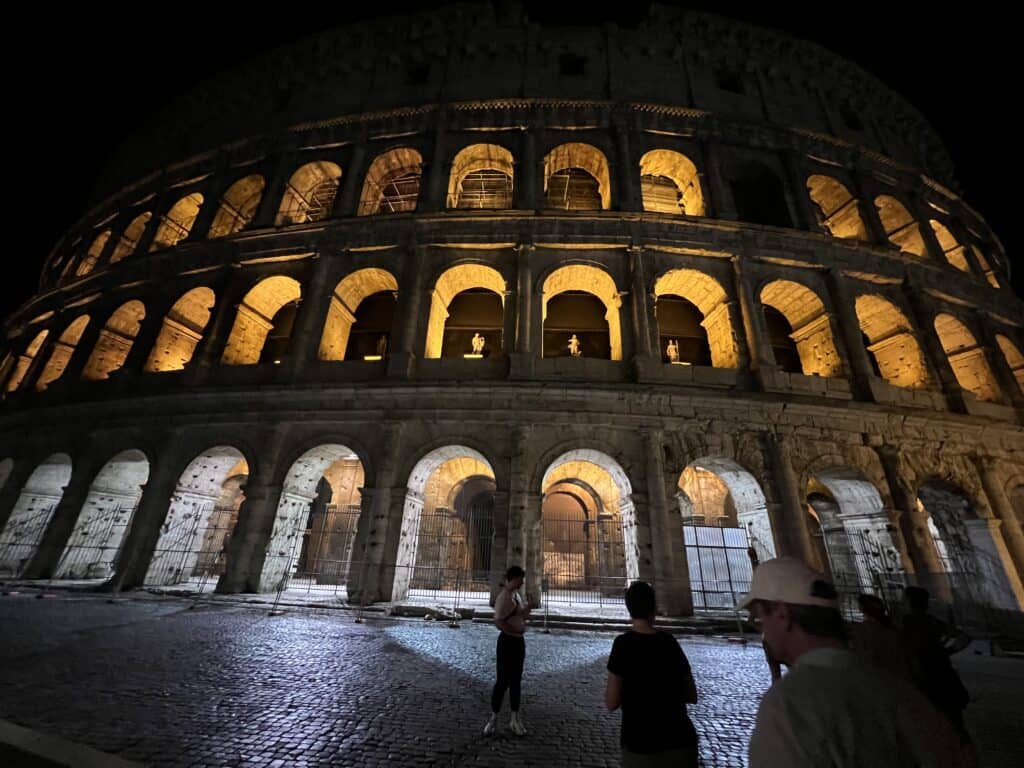
Tour Recommendations!
My last visit to Rome was particularly wonderful because I booked a private tour with Bittersweet Life Podcast host, Tiffany Parks! Tiffany is an American who has lived in Rome for the past 20 years. She offers several different tours to choose from. I took the “Rome’s Marvels” walking tour and it was perfect for a wonderful overview of Rome’s most famous attractions, plus some off the beaten path sights. Tiffany is fun, engaging and very knowledgable about Roman history. I highly recommend looking into her tours. I think prices vary, but the tour I was on was about 275 Euros for 5 people.

Tiffany does not offer tours of the Vatican or the Colosseum but can connect you with an excellent tour guide who does. This is how we found our Vatican tour guide, Barbara.
By the way, the Bittersweet Life Podcast is a great resource to check out before your trip to Rome. There are many many episodes which feature Rome tourism and information.
Where to Eat
Click here for some great spots!
Where to stay and more thoughts on Rome!
Click here for where to stay and more stuff about Rome!
Book Recommendation
Check out this book for an excellent and fun detailed guide to Rome! “Glam Italia! 101 Fabulous Things to do in Rome by Corinna Cooke” is my favorite book for planning visits to Rome!
